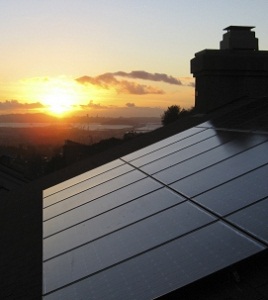SunRun enters Oregon with low-cost solar power for homeowners
 On April 27, SunRun announced that it would offer its solar power service to homeowners in parts of Oregon with low upfront costs. The service allows homeowners to have solar on their homes, generating electricity for roughly 10 percent to 15 percent less than what they pay for electricity on the grid and with no price fluctuation.
On April 27, SunRun announced that it would offer its solar power service to homeowners in parts of Oregon with low upfront costs. The service allows homeowners to have solar on their homes, generating electricity for roughly 10 percent to 15 percent less than what they pay for electricity on the grid and with no price fluctuation.
It’s the eighth state that SunRun is offering its solar power service in. It’s among a growing number of companies that offer such a service, including Sungevity and SolarCity, which offers solar leases in Oregon.
SunRun is making its service available to Oregonians in Portland General Electric’s and Pacific Power’s service territories in Portland, Salem, Corvallis and Bend.
“Solar is actually affordable now. The offering we have is making it more affordable, and we’re giving homeowners a service component,” said SunRun spokesperson Susan Wise. “The concept is that you don’t want the equipment—you want the clean power.”
The homeowner signs a 20-year contract with SunRun. SunRun works with local solar contractors to install a system on the homeowner’s roof.
“We call our offering a solar power service. It’s similar to a lease. They’re paying for the power they use, rather than the equipment,” Wise said.
Under the agreement, homeowners get energy pricing stability, as well as maintenance and monitoring. “They’re paying for clean power every month at a lower and controlled rate,” she said.
The systems are net-metered, and when the array produces more power than needed, the homeowners are reimbursed for the excess generation by their utility. But the systems aren’t designed to zero-out the homeowner’s use of grid-supplied electric, according to Wise.
“We don’t design them to offset all of a home’s electric use. We want to make sure the homeowners are getting affordable solar. In regions where there is a tiered power system, it’s not worth it,” she said. The systems are designed to offset a significant portion of the homeowner’s use.
“An average homeowner will save between 10 and 15 percent, and keep in mind that rates are volatile and likely to increase.”



